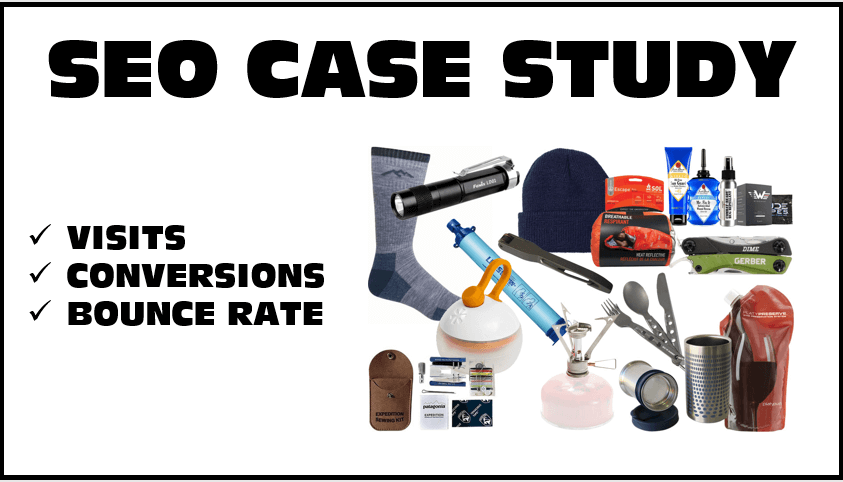When I joined the company as SEO and Content Specialist, the owners were using an agency for bad SEO advice and worse content that nobody viewed. When I conducted an initial SEO audit here’s what I found:
- Sitemaps used the system-generated product ID URLs, which canonical to search friendly URLs.
- Brand pages were not optimized but they were blocked by robots.txt anyway.
- Reviews, subcategories, and brand pages are blocked by the robots file.
- Sitemaps had thousands of errors and warnings.
- Auto-generated product page meta titles started with manufacturer names instead of more often searched model names.
- The home page lacked a good meta title.
- The third most prominent navigation menu item linked to a 404 (not found) page which eventually lost all rankings even for company name searches.
Many of the technical issues would take months to resolve, so my strategy was to focus on the top selling products, move to the product families, and then to generic search queries.
- Step 1 – Search query research, audit and strategy
- Step 2 – Run a global product meta title update to optimize for search
- Step 3 – Hand optimize the top selling products with metadata, short descriptions, and embedded video reviews
- Step 4 – Create new landing pages with content for top product families based on search volume, sales, and gross margin
- Step 5 – Boost conversion rate by exposing product page long description to mobile visitors
- Step 6 – Drive backlinks with top selling products and category data content
SEO Results
I quickly showed the owners what a little SEO can do. After two weeks spent optimizing the best-selling manufacturer’s brand landing page and products, the number of transactions almost doubled (up 93%), click-through and conversion rates rose, bounce rates decreased, and revenue spiked. While traffic was in seasonal decline I drove a 16% increase in manufacturer search traffic – even as average keyword rankings fell. Why? Because I was getting better traffic with more intent to purchase.
For example, search queries for only the manufacturer’s name may have the highest volume, but rarely convert to purchases. Most of the traffic from these top-of-sales-funnel queries goes to the manufacturer’s site anyway. But model-specific search queries that also contain “best price”, “best deal on”, or “review” are searches with high purchase intent. By optimizing for those searches I could double revenue with only half the organic traffic.
To drive on-page engagement and boost conversion rates I created one-minute product review videos, hosted them on YouTube, and embedded the videos in the product long descriptions. However, I didn’t get the immediate impact I wanted.
I could tell from Google Analytics that mobile users were not viewing the videos, even through mobile visitors were the majority of traffic. Due to a programming change in the Magento platform, the long description was not visible by default for most mobile users. When this was eventually changed the average time on page for mobile users doubled, and the conversion rate went from 0.8% to 1.29% immediately.
One of the first things I did was optimize the Black Friday page for organic search, achieving #3 ranking for the most lucrative search query. In fact, organic revenue during Cyber Week was up 40% year-over-year. Thanks to better search visibility and better conversion rates, site revenue increased 76% during the past year.
Ultimately though the Magento platform slowed to a crawl from the implementation of user review and image upload functionality (TalkTo). Visitors were uploading uncompressed images and leaving dozens of reviews for top products, killing the page load speed to the point where no further optimization could reverse the falling rankings.

